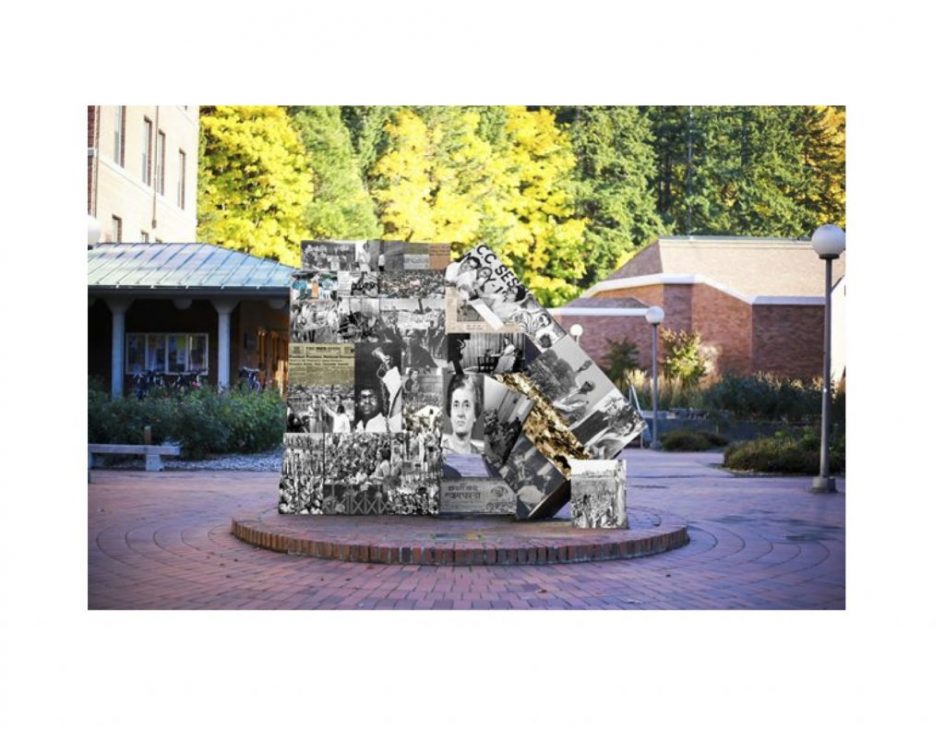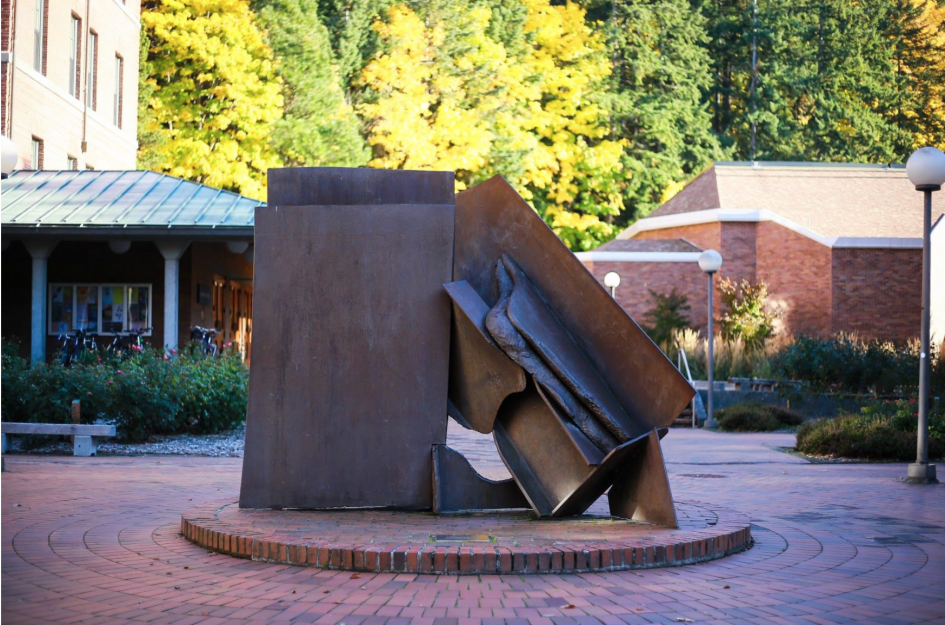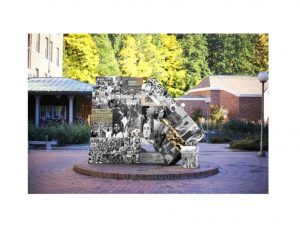- India Original
- India Interpretation
The significance of this sculpture is to represent how the people of India are pushing towards the powerful elite of the country. When looking at Anthony’s sculpture we can see that the abstract and minimal sculpting was considered.
After traveling from his homeland of England, his trips around the world provided many experiences that he then took home and expressed throughout his art and sculpting. Hence, the creation of “India” where he expressed the current struggles and livelihoods that the people of this region were experiencing.
The visual interpretation that was perceived as a group collaboration, was that we should configure a way to express Anthony Caro’s meaning of India and the political, economical struggles it endured in the 70s, in a more apparent method. To best represent the meaning of the sculpture, historical images of the people, and politics during the hardships of India during this time, was done using a collage. This would make it appear as chaotic, messy and unorganized, to provide that visual understanding and connection to the emotion of the significance of that time period of corruption.
Bibliography:
Aboukhadijeh, Feross. “1960-1970” StudyNotes.org. Study Notes, LLC., 17 Nov. 2012. Web. 26 Oct. 2017. https://www.apstudynotes.org/us-history/timelines/1960-1970/.
“Anthony Caro – India.” React Research Execute, 15 May 2017, wp.wwu.edu/wwuart109/2017/05/15/india-anthony-caro-2/.
Kramer, Hilton. “Art: Anthony Caro Adds New Forms.” The New York Times, The New York Times, 6 May 1977, www.nytimes.com/1977/05/06/archives/art-anthony-caro-adds-new-forms.html.
Shone, Richard, and Peter Fuller. “Exhibition Reviews.” London, Waddington Gallery & Knoedler Gallery, pp. 916–918., doi:Burlington Magazine is collaborating with JSTOR to digitize, preserve, and extend access to The Burlington Magazine.
Credits:
Ivy: Admin, Researcher, Photo Editor
Eddie: Photographer, Researcher
Karine: Researcher




Leave a Reply